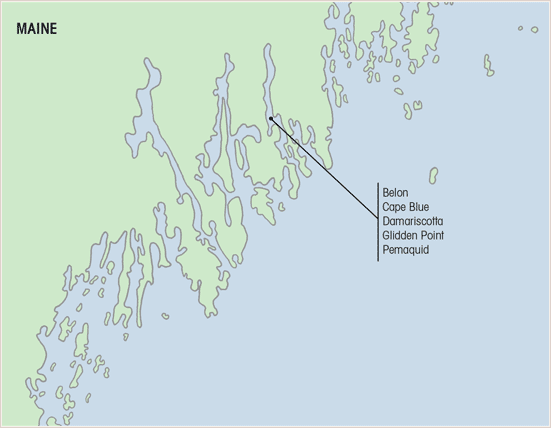Maine
In most people’s minds, Maine is lobster country. But the same frigid ocean, terminal moraine, and unpolluted coastline that grows such happy crustaceans also makes for beautiful bivalves. Within Maine’s innumerable finger estuaries, fed by the robust tides, grow oysters that are distinctly Maine, as salty as a Camden sea captain.
Maine oysters grow slowly. While southern oysters can reach market size in a year or less, a Maine oyster needs three years minimum. A four-year-old, cold-water Maine oyster has a glorious depth of texture and flavor, a deep cup, and a beautiful green-and-white shell, sometimes edged with purple, that can be remarkably tough and hard-bitten, like Down Easters themselves.
The Damariscotta River estuary, midway up the Maine coast, has been ground zero for oyster lovers for thousands of years. High up the estuary sits the Glidden Midden, an enormous hill of oyster shells dating back more than 2,000 years. The mound is thirty feet high, runs along the river for 150 feet, and contains some oyster shells a foot long.
Among Maine’s string of finger estuaries, the Damariscotta River stands out. Virtually any oyster from the Damariscotta is going to be tasty, thanks to the shape of the basin. The cold, foggy Damariscotta runs wide and deep fifteen miles inland to the town of Damariscotta and beyond to Damariscotta Lake, giving plenty of room for growing oysters. Within a stone’s throw of each other you’ll find the growing areas of Glidden Point, Pemaquid, Dodge Cove, Hog Island, Mook Seafarms, and many other leading oyster producers. This river is the Northeast’s Cote D’Or.

